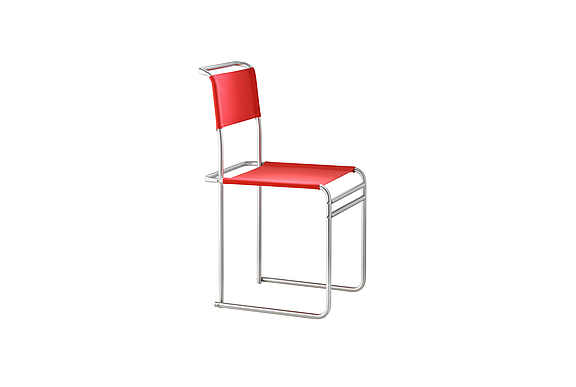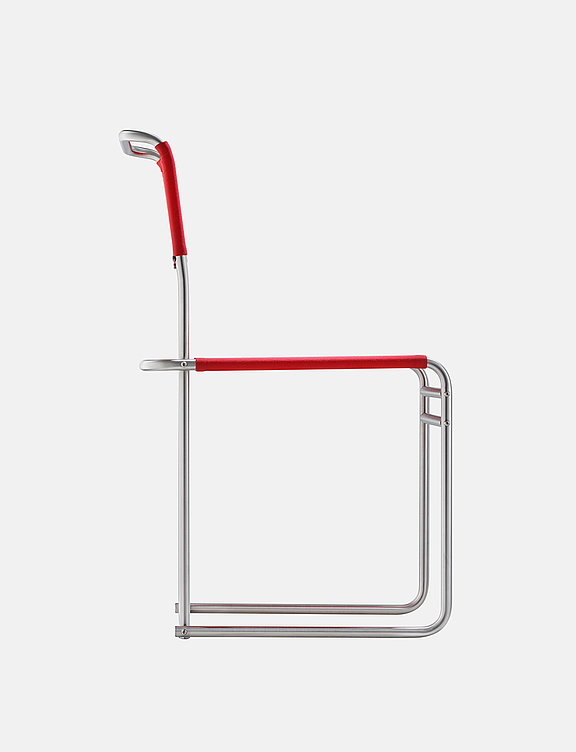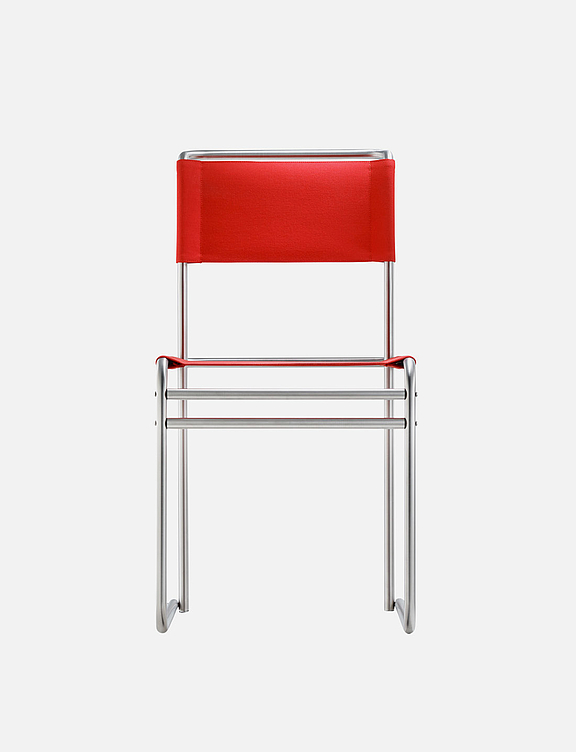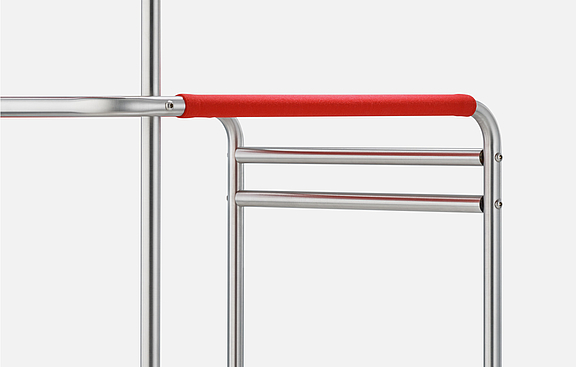
B40
Breuer-chair
Bauhaus Original
Marcel Breuer
1925


B40
Revolution of sitting:
floating and flying
Frame
nickel plated steel tube or stainless steel (B40E)
Seat-belts and back-belts
Bauhaus-straps (made of durable fabric "Outdoors"), 40 colours
fabric or leather, several colors
Dimensions (cm)
Width: 45
Depth: 57
Height: 88
Seat height: 47
Iconic but yet as ethereal as if Marcel Breuer had made it by magic. Nonetheless, the B40 chair was born out of a new design idea: Breuer simply rotated his Bauhaus stool by 90 degrees to create it. The resulting B40 became the epitome of Bauhaus modernism, which revolted against heavy furniture and all that was bulky. The catalogue of Breuer’s “Standard Möbel” furniture company describes it as follows: “Fabric-covered tubular steel furniture offers all the comfort of well-upholstered furnishings without their weight, expense, cumbersome bulk and unhygienic qualities.”
It’s well worth letting your eyes roam and take a closer look at the fine connections between the steel tubes. El Lissitzky said: “Only inventions will determine form creation.” These inventions lay firstly in using the elastic properties of steel and tube bending, and later in flattening the tube for greater resilience. Two essential factors for the development of the cantilever chair based on a new spirit of the times: floating and flying.
The B40 therefore stands out for the details that transform its cubic shape into elegance. A geometry that follows the body. The backrest is slightly inclined to support the lower back, ending in an arch that makes the chair easy to transport. Perhaps unnecessary in terms of design, the double struts on the front are aesthetically pleasing and provide added stability, creating a rhythmic accent, as if Breuer had been making crystalline music – and not a highly versatile chair.
Marcel Breuer (1902-1981) opened up completely new avenues for the furniture industry with his brilliant idea of applying the principles of lightweight bicycle construction to furniture design. “My flight of fancy – which came to me whilst cycling in a train of thought that led from the handlebars of my bicycle to the engineering of tubular steel furniture – quite unexpectedly spread across the globe,” wrote Marcel Breuer in 1937. His tubular steel furniture became the epitome of elegance and lightness in a world facing major changes – which thus resembles ours in many ways. The B40 allows us to physically experience this moment in time.


Perfection of construction and detail. Of course, the first thing we associate with Bauhaus master Marcel Breuer is one material: tubular steel. And one principle: the cantilever chair, which sparked modern furniture design. “Humankind was freed from the tethers of rigid sitting to enjoy the freedom of the floating seat. The cantilever chair was a symbol of its time.” But this does not really do justice to Marcel Lajos (“Lajkó”) Breuer (1902-1981). What he really pursued was research into the essence of objects: what should, what can a modern piece of furniture do today, was the Bauhaus question.
In 1925, Breuer became head of the furniture workshop in Dessau as a “junior master”. The year before, he had already postulated his definition of contemporary furniture. Although he attached great importance to details, Breuer favoured the precision of thinking over formal aspects. “There is the perfection of construction and detail, along with and in contrast to simplicity and generosity in form and use,” he wrote in an essay outlining his philosophy.
His role in popularising tubular steel for furniture design may also be due to his being one of the first to realise how dynamic our lives had become, demanding equally light and flexible solutions. The cycling enthusiast also embraced the latest trends in architecture, industry and design for a new zeitgeist. “I have specifically chosen metal for these pieces of furniture to achieve the characteristics of modern spatial elements,” explained Breuer. “The heavy upholstery of a comfortable armchair has been replaced by tightly stretched fabric surfaces and a few lightweight springy cylindrical brackets.”
In addition, the construction was no longer hidden, but flashing chrome became a visible part of the design. Cantilever chairs were bolted, not welded, functions stacked and colour-coded. The result was a dematerialised floating appearance and a new spirit of space. The cantilever chair meant a liberation from the thousand-year-old model of rigid throne-like sitting. It was the implementation of the functional, kinetic and constructive counter-principle. This kinetic line, the dawn of the modern era, can still be traced to the young Bauhaus designers today.
